#california
California Governor Sides With Red Light Camera Companies
California Governor Jerry Brown (D) sided on Friday with red light camera companies and the remaining municipalities that use automated ticketing machines. He vetoed a measure that would have placed the mildest of restrictions on photo ticketing.
“I am returning Senate Bill 29 without my signature,” Brown wrote in his veto message. “This bill standardizes rules for local governments to follow when installing and maintaining red light cameras. This is something that can and should be overseen by local elected officials.”
1965 Impala Hell Project, Part 15: No Replacement For Displacement!
Before packing up the Impala and leaving Georgia in the fall of 1996, I took the car to Atlanta Dragway and ran some semi-disappointing low-17-second quarter-mile passes. Back in California, I resolved to make some improvements to the car’s running gear. After 15 years as a cheapskate, junkyard-centric gearhead, I was finally willing to spend substantial cash for new aftermarket performance parts. The main question was: what kind of engine would I build?
Rust, Tatts, and Brilliant Engine Swaps: Billetproof California 2011
The rules for the Billetproof show are simple: Nothing newer than 1964, no trailered vehicles, no post-1960s mag wheels, no fenderless cars with independent front suspensions, and— above all— no billet anything! I flew out to California Saturday to check it out.
Down On the 1993 Hayward Street: Ripped-n-Stripped Victims
When scanning old negatives for the most recent installment of the Impala Hell Project series, I found these Ansco Pix Panorama camera shots that I took in gritty, grimy, industrial Hayward, California in 1993. They didn’t add anything to the Impala Hell Project story, so I’m sharing them in a separate post.
1965 Impala Hell Project, Part 11: Son of Orange County
In Part 10, the Hell Project Impala got Fiat scoops on the hood and hit the I-5 trail again. By late 1993, the car looked more or less the way I’d planned when I started the project and had become a surprisingly good daily driver (thanks to more modern brakes and a reliable, HEI-equipped 350 engine). I still planned to do some suspension and horsepower upgrades, once the early 1990s recession relaxed its grip enough for me to land a decent-paying job, but the setup I had was fulfilling my driving needs very well. Then, in the spring of ’94, Richard Nixon died, and I decided to take the Nixon-hood-ornamented car down to his birthplace and mingle with the mourners.
Down On The 1993 Stockton Highway: Battle-Scarred 1973 Buick Electra 225
While scanning endless strips of 35mm negatives for the Impala Hell Project series, I keep running across shots of random cars I thought were interesting at the time. This sort of photography led, 15 years later, to my Down On The Street series, and so I thought I’d share this set of grainy Tri-X photographs of a Malaise Buick in California’s Central Valley, captured on a super-cheapo Ansco Pix Panorama camera.
Down On The Oakland Street, 1994: Before Taurus Beaters Were Cheap Enough
The reason I’m only doing ’65 Impala Hell Project posts every week or so is the fact that it takes for-freakin-ever for me to search and scan endless sheets of 35mm negatives and slides for images that are relevant to the story (the 1999-vintage SCSI film scanner I’m using sure isn’t helping matters). There is an unexpected bonus that comes with this process, however: I keep running across interesting car photos shot during my travels.
EV Subsidies: California Runs Out Of Juice
Ever so environmentally conscious California offered its citizen a rebate up to $5,000 if they buy an electric car. That and the $7,500 federal tax credit adds up to a good chunk of money. 1978 vehicles later, the state is out of funds. No more. According to the California Air Resources Board, “the Clean Vehicle Rebate Project may run out by July due to high consumer demand.” May run out? It already did.
AB 529: California's Red Light Revenue Raid
Not satisfied with impoverishing residents and unwary visitors with $500 automated tickets for being a tenth of a second late at a light, California’s legislators are moving a new bill allowing cities to reduce many posted speed limits by 5 mph. The lower limits will, in turn, allow them to shorten yellow lights, which will produce more red light camera tickets (four of the sponsoring cities have red light cameras).
California Considers Bill to Shorten Yellow Times
The amount of yellow warning time at California intersections would drop along with speed limits under a bill being considered by the state legislature. The Senate Transportation Committee will hold a hearing Tuesday on Assembly Bill 529, a proposal that re-writes the state’s speed trap law so that cities would be able to round down all speed limits after conducting a traffic study. The measure passed the full Assembly by a 77 to 0 vote on May 19.
Will Chrysler Sell Its California "Retail Laboratory"?
I missed the latest twist in Chrysler’s California dealer drama when I was traveling in Iowa last week, but because it’s such a significant story (and because Ford recently proved how expensive dealer drama can be), we’ll commit the cardinal rule of blogging and take a look at some week-old “news.” California’s DMV won’t report the findings of its investigation into Chrysler’s allegedly non-compliant “company store” until September 29, but the Detroit News has reported that “about 75 percent” of these dealer complaint cases end in settlement and that
Chrysler Group LLC may be on the verge of selling its company-owned flagship dealership in Los Angeles to a private retailer, which could appease angry franchise dealers in California.
So much for ChryCo leaving the state in an angry huff. In fact, angry is about the last thing CEO Sergio Marchionne sounds about the whole thing…
CARB To Bump ZEV Mandate, Automakers Fight Back
The WSJ [sub] reports
California regulators want zero-emission vehicles—those that don’t run on petroleum—to comprise up to 5.5% of new-car sales in the state, or roughly 81,300, in 2018. The target would rise annually to 14%, or more than 227,600, by 2025…
Tom Cackette, chief deputy executive officer of the California Air Resources Board, says his agency’s goal is to test whether electric cars can become mainstream vehicles, or wind up serving a “niche” market. Mr. Cackette said the state is investing in charging stations and other infrastructure, and he pointed to the sales of new plug-ins on the market to show that there’s a demand for the vehicles. He said he believes the California targets are feasible.
“That is a question we’ll only find out by trying,” he said. “I think [car companies] are making a pretty big investment in these vehicles, and they wouldn’t be doing that if they didn’t think there was a market there.”
Industry lobby groups are pushing California to roll the ZEV mandate into the forthcoming national CAFE standard. Small automakers like Mazda complain that placing a California ZEV mandate on top of national emissions standards would create a “costly burden…in light of the uncertain marketplace and infrastructure for electric vehicles.” And since CARB is leading the federal government by the ear towards a national standard anyway, it could simply push for a higher CAFE rate, which would at least allow firms the flexibility to comply on their own terms. Adding a major ZEV mandate won’t fundamentally change the national standard, but it absolutely will force automakers to spend huge amounts of money to develop a kind of vehicle that has major shortcomings, is only as green as local electricity generation, and has yet to prove itself with consumers. Whatever you think of emissions standards increases, it should be clear that consumers should determine what mix of technologies can best serve their needs while lowering fuel consumption and pollution.
California Court: Turn Signal Unnecessary When Nobody is Looking
California drivers do not need to use their turn signals if no other car is nearby according to a ruling handed down Friday by the state’s second-highest court. A three-judge panel of the court of appeal found that La Habra Police Officer Nick Wilson was in the wrong when he stopped Paul David Carmona, Jr. for making a right-hand turn in his Chevy SUV without signaling. Wilson was about 55 feet away traveling in the opposite direction at the time Carmona made his turn. The road was otherwise empty.
Chrysler's California Dealer Battle: Wider War Already In Progress?
It took a bit of research to fully parse the California New Car Dealer Association’s complaint against Chrysler and its partially company-owned store in Los Angeles, and our finding is that the CNCDA is actually gunning for Chrysler with gusto. But, argued some of the B&B, surely Chrysler doesn’t want to be kicked out of California? Surely Chrysler’s California dealers don’t want to see their manufacturer banned from selling vehicles in the state? Well, it turns out we were missing a little context that seems to indicate why Chrysler’s California dealers are willing to go to war over a single dealership: Chrysler is overhauling its California retail presence with the help of Wall Street hedge funds. Having used the bailout to wipe out 789 dealerships across the country, Chrysler appears to be working around franchise law to exert more control over its retail network in the Golden State. No wonder then that California’s dealers are standing together to attack Motor Village, the most egregious example of Chrysler’s new retail model. And there’s no knowing where the conflict could end…
Could Chrysler Be Kicked Out Of California?
About two months ago, we heard that Chrysler’s “prototype” Motor Village dealership in the Los Angeles area had been hit with a complaint [ PDF] from the California New Car Dealer’s association, arguing that it violated state laws against manufacturer-owned dealerships. The store, a test bed for what Chrysler terms “new retail concepts,” is in fact a partnership between Chrysler and LaBrea ChryslerJeep, making it appear to fit a legal loophole allowing OEM partnerships in retail ventures. But the CNCDA argues that Chrysler is undercharging for rent on the dealership building which it owns, and according to Automotive News [sub], the California Department of Motor Vehicle’s New Motor Vehicle Board just voted unanimously to open a formal investigation into the situation. And the stakes couldn’t be much higher, as AN reports:
If the DMV finds that Chrysler violated state law, the automaker could have its business license in California suspended or revoked.
Ruh-Roh!



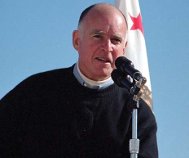


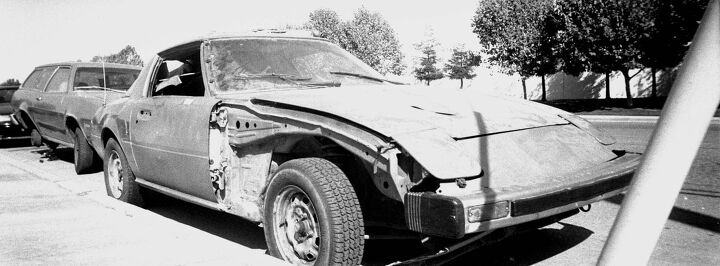
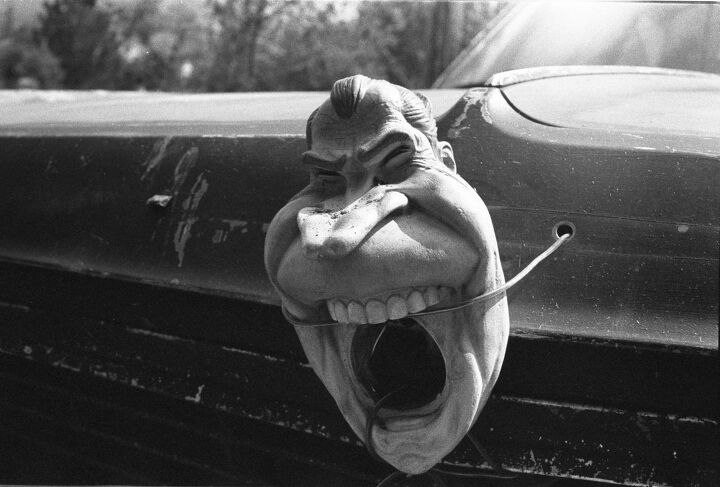



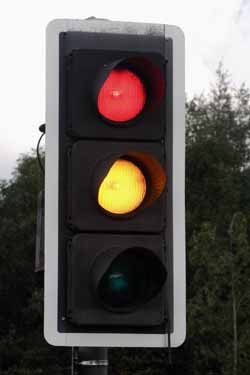
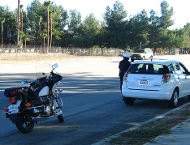













Recent Comments